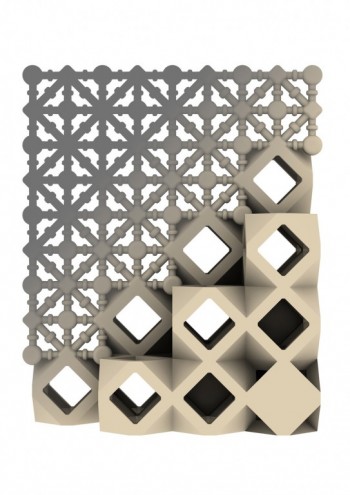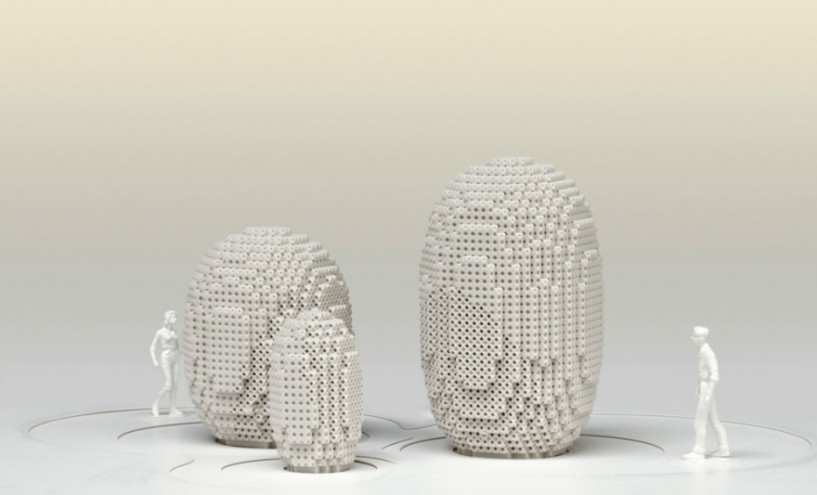Taking their cue from desert architecture that uses low-tech, natural materials to reduce the effects of extreme heat by limiting exposure to light and promoting airflow, a London-based design firm came up a with an alternative possibility.
PostlerFerguson created a range of 3D-printed pods, or Microclimates, that stimulate energy-free cooling through evaporation. The interesting part is that these pods, or cooling units, are attractive enough to be displayed as art installations in public spaces, thus creating microclimates.
Microclimates has a complex interior structure that is achieved using custom software. The core structure of the pod consists of sand-filled vertical tubes that collect water (rain water or periodic watering). This water then diffuses outward throughout the structure through capillary action.
The Microclimates then work because the outer layers of the structure have two types of pattern, one dense and one open. PostlerFerguson explain: “The dense pattern allows water and air to penetrate the structure, but shade the interior to prevent excess evaporation of store water.
The open pattern allows cool air to emerge from the interior, creating a micro-climate of cool air and filtered light.”











